Find out what the propagation and garden teams have been up to this week.
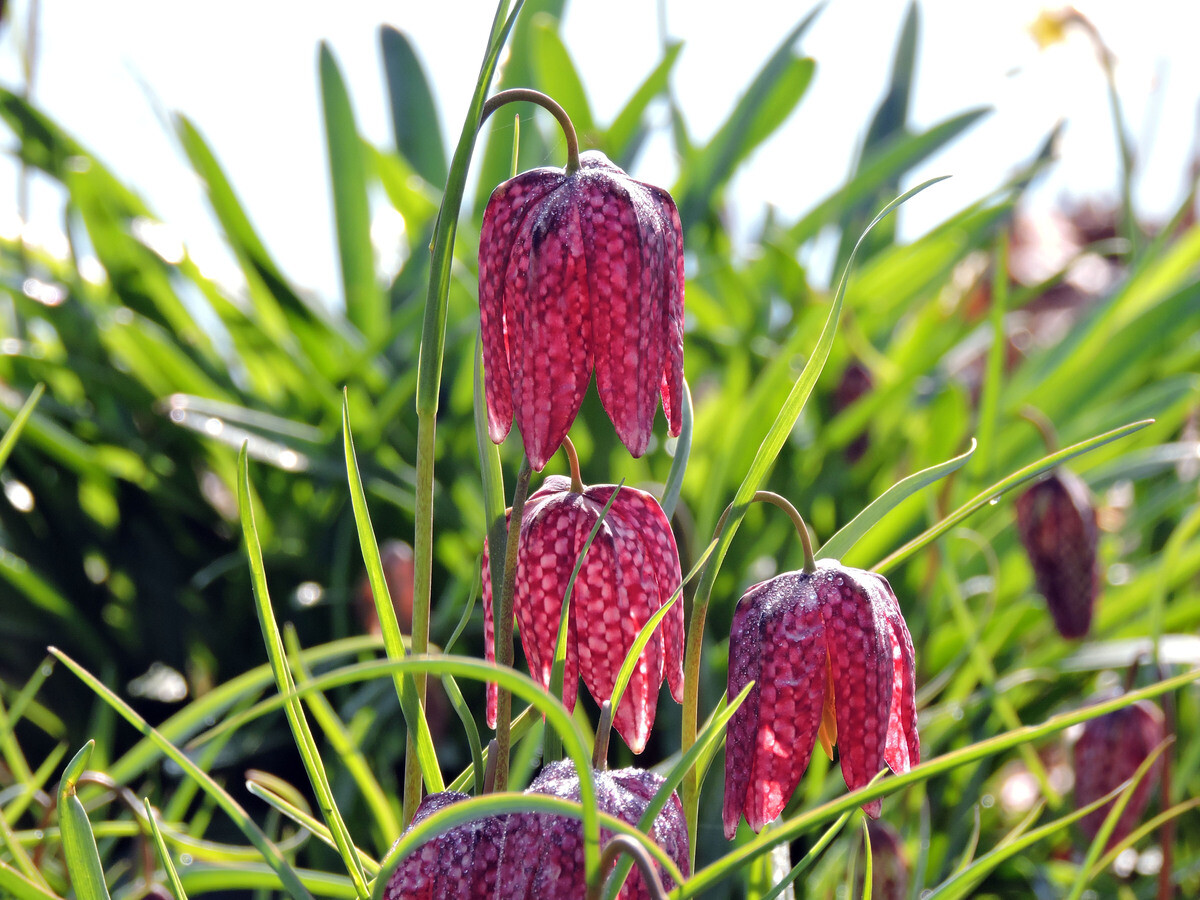
Our favourite spring bulbs
![]()
When little else is showing above the cold soil, spring bulbs can always be relied upon to add colour and beauty to the garden. They are a sure sign of the arrival of spring; their vibrant colours bringing joy after the bleakness of winter.
Whether it's drifts of naturalised crocus, or the tall, striking presence of Fritillaria persica, each brings a unique charm to every garden situation. Regardless of your garden's size or aspect, there's always a spring bulb to enhance and create a breathtaking display.
Here are some of our favourite spring bulbs
Crocus- Some flower in autumn, but most flower in early spring when they provide a valuable nectar resource to bumblebees and butterflies that have just emerged from their winter torpor, along with a whole range of other pollinators. Grow in full sun or part shade.
Eranthis hyemalis- One of the earliest to flower in spring, along with Galanthus (snowdrop). The typically yellow flowers are interestingly structured, as surrounding the flowers is a ruff of dissected leaf-like bracts. Happiest in semi-shade to full sun, so suitable in a woodland setting under deciduous shrubs, or near the front of the herbaceous border.
Erythronium- The dog's tooth violets are delightful spring flowering bulbs. Upright stems produce elegant pendent flowers, with reflexed petals, in a variety of colours, often with contrasting markings on the petals. Leaves can be glossy, with intricate marbling pattern. Suitable for growing in light shade, or at least shaded during the hotter summer months, with a soil which does not dry out too much.
Fritillaria- After the snowdrops and daffodils have faded away, our colourful range of fritillaries appear. There are many species of these attractive bulbs, which grow in all kinds of conditions. The flowers of all fritillary species are rich in nectar, attracting bumblebees and wasps to pollinate them, and pollen on the large, exposed anthers is eaten by some hoverflies.
Galanthus- Traditionally known as the harbinger of spring, with their delicate, nodding flowers in full show, particularly as winter recedes. Mainly growing in woodland and cooler shadier environments, but will take sunnier positions in the UK, with reasonable moisture during their growing season. We will divide clumps after flowering, every 3-4 years. Introduced into our gardens more than 400 years ago, and now fully established in the wild thoughout Great Britain, snowdrops have all the appearance of native species. With the exception of the blowsy doubled cultivars, all are attractive to, and a vital winter/spring resource for queen bumblebees and honeybees newly emerged from hibernation.
Leucojum- Previously part of the Galanthus genus, but back in the 18th century, Linnaeus split them into different genera as leucojum's six tepals are of equal length, whereas with galanthus, the three inner tepals are shorter. Recently other species have been moved into the genus Acis. Leaving only two species L. aestivum and L. vernum. Both with bell-shaped, pendent white flowers, often with each tepal tipped with a green or yellow spot. Both are called snowflakes, but quirkily in the UK, the summer snowflake (L. aestivum) flowers in spring and the spring snowflake (L. vernum) flowers in winter! Best grown in a moisture retentive soil in full sun.
Narcissus- Most of the larger species and hybrids, along with some of the smaller wild ones, appreciate a good moist soil, in sun or dappled shade. For an early traditional daffodil, try N. 'Rijnveld's Early Sensation'. Subtlety of colour, N. 'Jenny'. Diminutive in stature, N. 'Gipsy Queen', N 'Snow Baby', N. minor and N. cyclamineus, (used in breeding to reflex the petals backwards, as though they are caught in the wind). For long flowering period and scent, try N. 'Hawera’.
Scilla- Early spring flowering bulbs, which now includes the old genus Chionodoxa. Tending to be smaller plants, with starry or bell-shaped flowers, often blue. Looking amazing en-masse, as early colour in your border, or for naturalising in grass. Looking particularly fine with narcissus (daffodils). Larger species, like S. peruviana, flower much later in spring to early summer.
Scilla forbesii
Tulipa- One of the last tulips to flowers with us, T. sprengeri, a dazzling scarlet petalled beauty, is but the tip of the iceberg of these bulbous perennials. There are around 100 species from the Mediterranean into central Asia, often in dry, open rocky places. Rarely woodlands, however one species, T. sylvestris, is now naturalised in some woodlands of southern England. Most will flower through much of spring, normally with goblet-like flowers opening with the sun. There is great variability in colour, shape and markings, so much so that it induced 'tulip-mania', starting in 17th century Holland.
Read on: Species Tulips and How to Grow Them

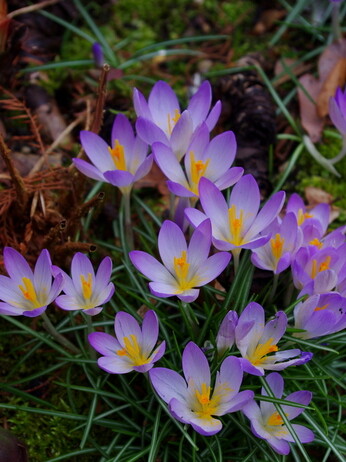
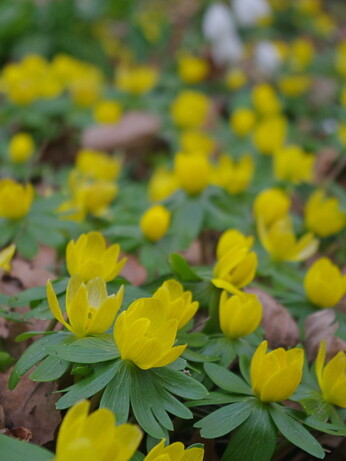
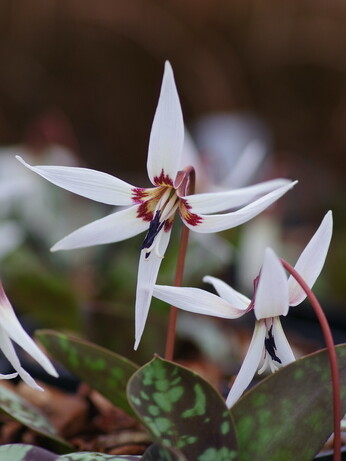
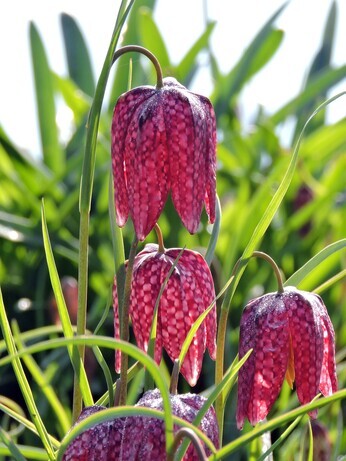
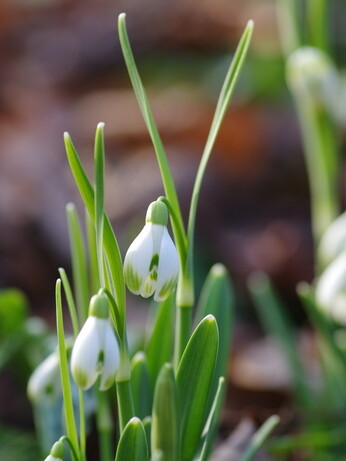
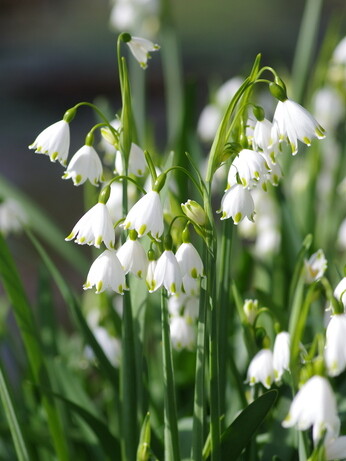
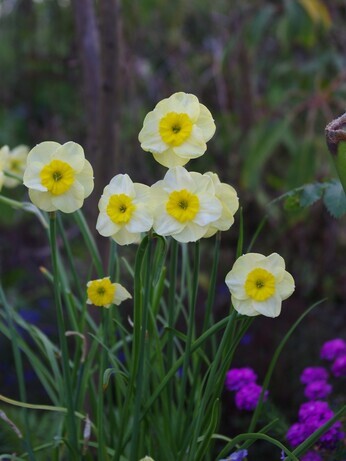
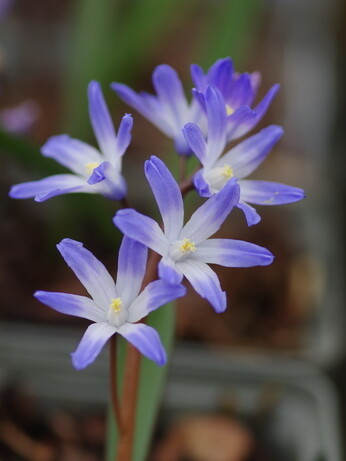
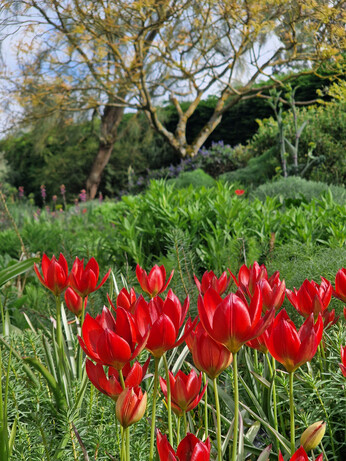
COMMENTS